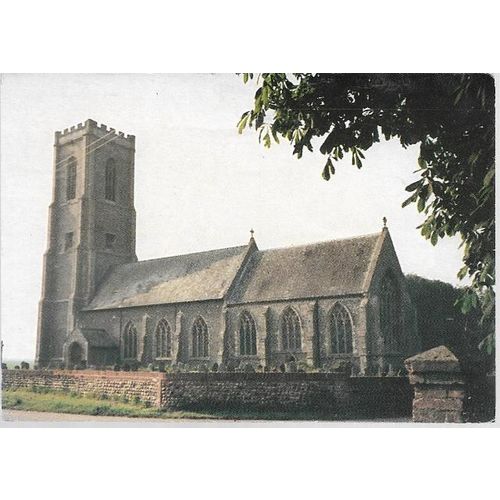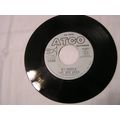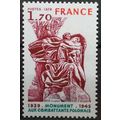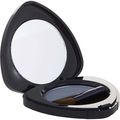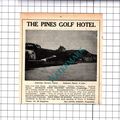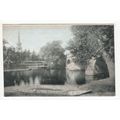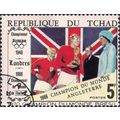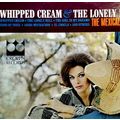Southrepps, Norfolk - St. James the Great Church - postcard c.1980s
- Condition : Used
- Dispatch : 2 Days
- Brand : None
- ID# : 180570482
- Quantity : 1 item
- Views : 195
- Location : United Kingdom

- Seller : justthebook (+1695)
- Barcode : None
- Start : Wed 08 May 2019 05:54:30 (EDT)
- Close : Run Until Sold
- Remain : Run Until Sold
Checks/Cheques
 for 1 item(s) edit
for 1 item(s) edit
Shipping Calculator
More Listings from This Seller view all
Seller's Description
- Postcard
- Picture / Image: St. James the Great, Southrepps, Norfolk
- Publisher: the church [printed by Broadgate Printers]
- Postally used: no
- Stamp: n/a
- Postmark(s): n/a
- Sent to: n/a
- Notes / condition:
Please ask if you need any other information and I will do the best I can to answer.
Image may be low res for illustrative purposes - if you need a higher definition image then please contact me and I may be able to send one. No cards have been trimmed (unless stated).
------------------------------------------------
Postage & Packing:
Postage and packing charge should be showing for your location (contact if not sure).
No additional charges for more than one postcard. You can buy as many postcards from me as you like and you will just pay the fee above once. Please wait for combined invoice. (If buying postcards with other things such as books, please contact or wait for invoice before paying).
Payment Methods:
UK - PayPal, Cheque (from UK bank) or postal order
Outside UK: PayPal ONLY (unless otherwise stated) please. NO non-UK currency checks or money orders (sorry).
NOTE: All postcards are sent in brand new stiffened envelopes which I have bought for the task. These are specially made to protect postcards and you may be able to re-use them. In addition there are other costs to sending so the above charge is not just for the stamp!
I will give a full refund if you are not fully satisfied with the postcard.
----------------------------------------------
Text from the free encyclopedia WIKIPEDIA may appear below to give a little background information (internal links may not work) :
*************
Southrepps is a village and a civil parish in the English county of Norfolk.[2] The village is 5.2 miles (8.4 km) southeast of Cromer, 21.9 miles (35.2 km) north of Norwich and 136.0 miles (218.9 km) north of London. The village lies northeast of the A149 between Kings Lynn and Great Yarmouth. The nearest railway station is at Gunton for the Bittern Linewhich runs between Sheringham, Cromer and Norwich. The nearest airport is Norwich International Airport. The village is close to the sea and surrounded by rich agricultural land.
The village is split in two halves separated by a mile of farmland. The halves of the village are known as Upper Southrepps and Lower Southrepps (Upper Street and Lower Street to the locals). It is believed locally that this situation came about due to the Black Death which took place from 1348-1350.
The village has two shops and one public houses - the Vernon Arms in Church Street in the upper part of the village, the Suffield Arms opposite Gunton Station in the lower part of the village having closed in 2011. Southrepps still has a post office as one of its two shops, and at the other end of the narrow picturesque High Street is the local Mace supermarket.
At the centre of local life in Upper Southrepps is the Village Hall (pictured below decorated for the villagers' Burns Celebration), which provides a venue for a number of regular users and special events such as receptions for weddings, christenings and funerals, annual village events and other celebrations. It is the meeting place for the active Southrepps Society (see below) which investigates and celebrates rural North Norfolk life in and around the village, which recently published its DVD, "Southrepps: The Story of a North Norfolk Village". It is used weekly as a day centre for the local Multiple Sclerosis Society. There is an outdoor Bowls Club located near the village hall with a well-maintained green of six playing rinks. Lower Southrepps has its own meeting place, the social club, which holds many different functions. The very large parish church dominates the local landscape and is called St James. This is a busy church, providing for a range of different worship styles and hosting a number of different local activities, ranging from the Christmas Tree Festival to the Flower Festival during the Open Gardens event in late spring, as well as an annual Classical Music Festival.[4]
Southrepps has a primary school, Antingham & Southrepps CP.[5] A group of villagers have been researching the history of the school. Here is an extract from their findings:
Two hundred years ago, Southrepps like much of rural East Anglia and the southeast was in a state of rebellion. Lord Suffield of Gunton Hall strongly supported agricultural reform responding to local distress and poverty at the time caused by unemployment, falling commodity prices, wages, farm rents and land values, mostly the result of the war with France. Like many landowners he feared for his life.
The founding of Antingham & Southrepps School by him in 1826, and well ahead of its time, had much to do with a desire to stem local unrest and was in keeping with the family’s customary generosity to the poor. The school is said to have been modelled on St Margaret’s Church, Thorpe Market, and certainly the end window of the building looked very ecclesiastical.
The school was extended prior to 1878 a bay being added at each end, extending the boys cloaks and with a whole infant wing added. According to the 1900 Kelly’s directory the school was built for 260 pupils. Today, at an enormous squeeze, the most it could take is 150 and that is with two new classrooms added and the headmaster’s house incorporated into the school. Yes, until 1971 he had quite a chunk of the building for himself and family. One headteacher, Mr Amies in the 1890s, lived there with his wife, his mother, TEN children – and a lodger! In fact a house existed within the school until 1982. Little surprise that there are references to overcrowding in the annual inspectors reports!
Overcrowding and open coal fires meant ventilation was a major Victorian preoccupation – as was cold! Headteachers frequently wrote to school managers about the problem but appeals to the education authority in Norwich fell on deaf ears. Indeed, in 1917 when Mr Owles, chairman of the school board, decided that something had to be done and bought stoves for the school, the county council response to such a high minded action was to charge the parish with the full cost of the heating!
The school was surprised when it was billeted by soldiers without warning during the First World War and similarly in World War II the school more than doubled in size overnight with war being declared on 3 September 1939 and 223 evacuees arriving from Dagenham High School the very next day! By December the High School was moved to Hill House in Lower Street for lessons and normal school sessions were restored. The evacuees did not stay long leaving on 2 June 1940.
The school logs reveal all manner of insights into government "efficiency", none more so than the log for 13 March 1946 ‘A Ministry of Supply official called today and left a supply of electric light bulbs and shades’ Sadly, the school had no electricity to take advantage of such largesse! In fact it had to fight to get it installed in 1951 being told in 1950 that there was enough natural light!
In spite of a war being on, the far-reaching 1944 Education Act, amongst many revolutionary educational changes, raised the school leaving age to 15 with part-time education to 18 (this latter being first enacted in law in 1918, but dropped in both cases because of huge budget deficits caused by the wars.) Antingham & Southrepps, at that time a school for children of all ages to 14 was supplied with a hut which was used (and still is) as a canteen. It wasn’t until 1957 that the school stopped taking secondary aged children.
The school got a playing field in 1974 and oil-fired central heating at about the same time. Unbelievably, indoor toilets didn’t arrive until 1979! Just in time…the school got Grade II Listed Building status soon after.
Listing Information
| Listing Type | Gallery Listing |
| Listing ID# | 180570482 |
| Start Time | Wed 08 May 2019 05:54:30 (EDT) |
| Close Time | Run Until Sold |
| Starting Bid | Fixed Price (no bidding) |
| Item Condition | Used |
| Bids | 0 |
| Views | 195 |
| Dispatch Time | 2 Days |
| Quantity | 1 |
| Location | United Kingdom |
| Auto Extend | No |

